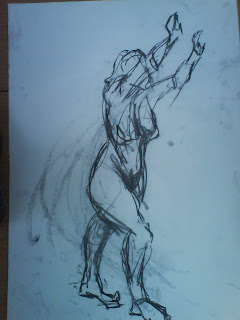After reviewing my previous work I realised that more and more I needed to discard my lines. I was hiding behind them too much, and most likely they were concealing the true flaws in my work. I began to have some serious fun by pushing away from lines and relying solely on the study of tone.
I revisited my previous thumbnails and decided to create very crude collages, and repeat the same basic animation.
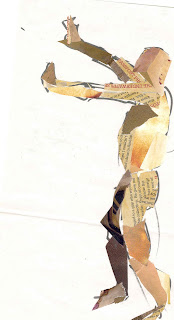
Essentially my thoughts were to not worry about proportion, or even making each piece look like a hand, or foot or any part of the body. My goal was to merely suggest the tone and to try, loosely, to make these thumbnails have some form and three dimentionality to them.
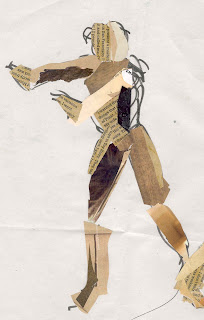
Some of my favourite parts of these collages are the use of the text, taken from magazines. Like linework, you can manipulte the direction of the text to suggest and streamline the shapes and contours of the body. Your eye naturally follows the direction of the text, which therefore means you read the posture correctly.
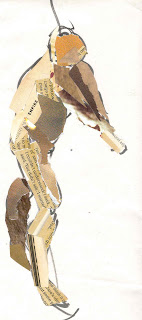
Below is my favourite collage as this was inspired by another student's lifedrawing observation where they only used black and cream paint. The tonal shift from the upper arm to the elbow onwards was so simple yet so effective. So I followed the same idea here and you can see, on the nearest arm, I literally use two shades to suggest the bend of the arm.
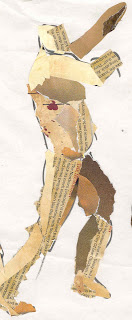
Again, like the previous test, I re-scanned these images and pieced them together. I think the tonal work doesn't detract from the movement, it only enhances it and makes you read the action even more. It is here we can see another principle of animation being ancouraged by the use of mere suggestive tone.






















.JPG)
.JPG)
.JPG)
.JPG)


















